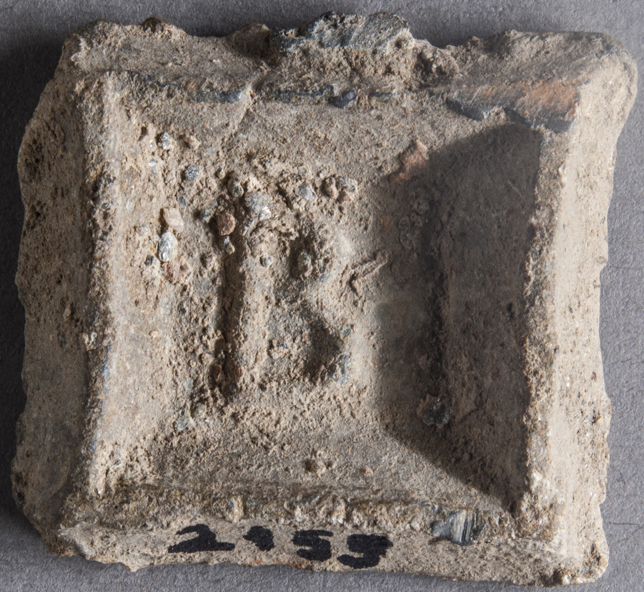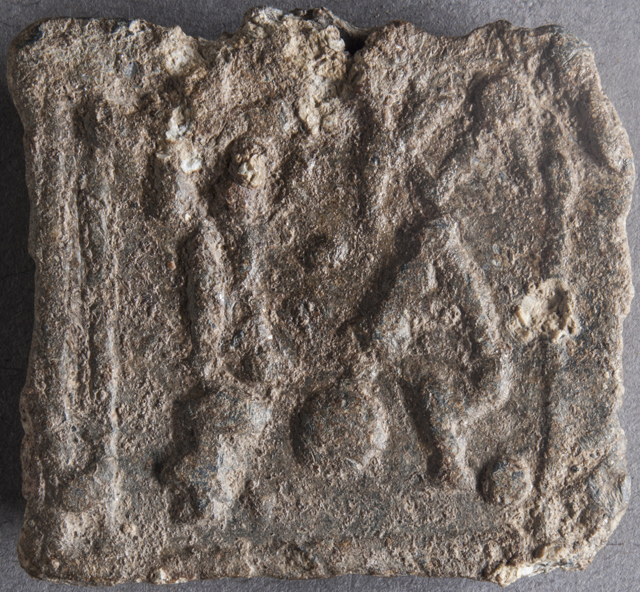
-
Copyright credit: Anatolian Weights and Measures Collection / Courtesy of Suna and İnan Kıraç Foundation Pera Museum

-
Copyright credit: Anatolian Weights and Measures Collection / Courtesy of Suna and İnan Kıraç Foundation Pera Museum

ARCHAEOLOGICAL DESCRIPTION OF THE WEIGHT
Authority
Mint
Denomination
2 Uncias
Material
Lead
Manufacture
Cast
Shape
Square
Length
3.60 cm
Width
3.40 cm
Height
0.70 cm
Metrology
| Mass (g) | Mass (grain) | Date of measurement | Reference | fragmented | cleaned | reference weight |
|---|---|---|---|---|---|---|
| 47.35 | - | - | CPAI III/1 | No | No | No |
| 47.31 | - | - | Öztürk and Güler 2023 | No | No | Yes |
Iconography
| Symbol | Technique | Direction | Position | Number | Synecdoche |
|---|
Wear
Worn
Corrosion
Corroded
Handle
No
Suspension hole
No
Recarved mould
No
Recarved weight
No
Intentionally destroyed
No
Archaeological description
CPAI III/1: Square in form with raised and bevelled edges; tab broken away; worn and corroded. On the obverse, B in relief which refers to two. On the reverse, ΠΙΚΑ / [Β] Α / ΡΟΥ, dot to bottom right. It is a two-uncia in unit (23.67 g).
Öztürk and Güler 2023: Description: Square in form with raised and beveled edges and a broken tab; worn and corroded. (A): Letter ‘B’ as a unit mark. (B): Inscription in three lines within a rectangular border. Inscription technique: Relief; Material: Lead. Inv. No: PMA 2159; Date of Acquisition: 2007; Findspot: Selçuk. City: Ephesos (?); Region: Ionia. Dimensions: 37 × 34 × 8 mm; LH: (A): 13 mm; (B): 7 mm. Weight: 47.31 g; 47.35 g [CPAI III 1]. Metrology: Two-Unciae. Edition: CPAI III 1, cat. no. 492. Date: IInd-IIIrd centuries CE. On side B in line 1, the personal name is enclosed within a square frame. The abbreviations for the praenomen and nomen gentile are separated by an interpunct, which has slightly slipped into line 2 during the mold-making process of this balance weight. ‘TI’ denotes the praenomen Tiberius, and ‘ΚΛ’ indicates the nomen gentile Claudius. Therefore, the full personal name in the genitive is Tiberius Claudius Varus. This name, associated with a market official, is documented for the first time on this two-unciae balance weight. However, an honorary inscription in Ephesos18 mentions a ‘Publius Claudius Varus’ who served as hierokeryx and agoranomos. There is a possibility that Tiberius Claudius Varus might be related to this individual. If the cognomen is referring to the same ‘Varus’ mentioned above, Tiberius Claudius Varus would have served as one of the marketplace officials in Ephesos alongside Hermippos and Apollonios.
Öztürk and Güler 2023: Description: Square in form with raised and beveled edges and a broken tab; worn and corroded. (A): Letter ‘B’ as a unit mark. (B): Inscription in three lines within a rectangular border. Inscription technique: Relief; Material: Lead. Inv. No: PMA 2159; Date of Acquisition: 2007; Findspot: Selçuk. City: Ephesos (?); Region: Ionia. Dimensions: 37 × 34 × 8 mm; LH: (A): 13 mm; (B): 7 mm. Weight: 47.31 g; 47.35 g [CPAI III 1]. Metrology: Two-Unciae. Edition: CPAI III 1, cat. no. 492. Date: IInd-IIIrd centuries CE. On side B in line 1, the personal name is enclosed within a square frame. The abbreviations for the praenomen and nomen gentile are separated by an interpunct, which has slightly slipped into line 2 during the mold-making process of this balance weight. ‘TI’ denotes the praenomen Tiberius, and ‘ΚΛ’ indicates the nomen gentile Claudius. Therefore, the full personal name in the genitive is Tiberius Claudius Varus. This name, associated with a market official, is documented for the first time on this two-unciae balance weight. However, an honorary inscription in Ephesos18 mentions a ‘Publius Claudius Varus’ who served as hierokeryx and agoranomos. There is a possibility that Tiberius Claudius Varus might be related to this individual. If the cognomen is referring to the same ‘Varus’ mentioned above, Tiberius Claudius Varus would have served as one of the marketplace officials in Ephesos alongside Hermippos and Apollonios.
Autopsy
No
INSCRIPTION
| Language | Technique | Legend type |
|---|---|---|
| Greek | Relief | Authority, Denomination |
Fac simile
B
ΠΙΚΑ / [Β] Α / ΡΟΥ
Öztürk and Güler 2023:
(A)
B
(B)
ṬỊ·KΛ
Β·A
POY
Edition
Öztürk and Güler 2023:
(Oὐνκίαı) βʹ || Τι(βερίου) | Κλ(αυδίου) | Βά|ρου.
(Oὐνκίαı) βʹ || Τι(βερίου) | Κλ(αυδίου) | Βά|ρου.
Monogram
ARCHAEOLOGICAL CONTEXT
Findspot (region)
Findspot (site)
context
CIRCUMSTANCES OF ACQUISITION
Region
City
Date of first acquisition
circumstances
DATING OF THE WEIGHT
Curatorial Section
GREEK
,
ROMAN
Time frame
FROM
1
TO
300
Comments on Chronology
CPAI III/1: Roman Imperial Period.
Öztürk and Güler 2023: Date: IInd-IIIrd centuries CE.
Öztürk and Güler 2023: Date: IInd-IIIrd centuries CE.
COLLECTION HISTORY
Collection
| Name | Date of acquisition | Inventory number |
|---|---|---|
| Pera Museum (Istanbul) | Dec. 31, 2007 | PMA 2159 |
Bibliography
| Reference | Page/Column | Reference (number) | Plate / Figure | Comment |
|---|---|---|---|---|
| CPAI III/1 | None | 492 | 119 | None |
| Öztürk and Güler 2023 | 116-117 | 12 | None | None |
VARIA